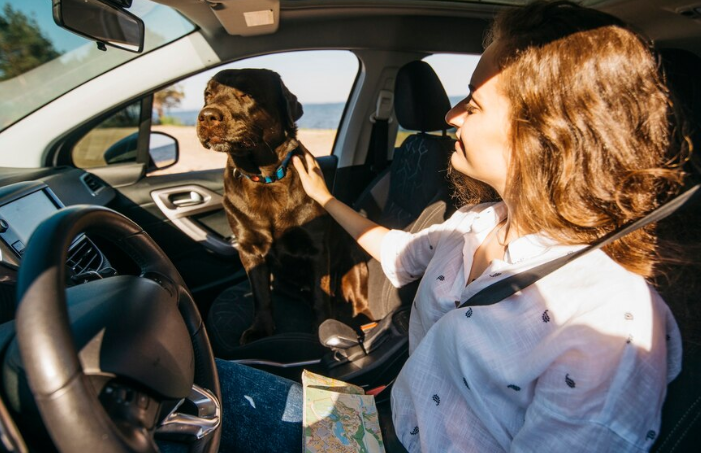
The importance of Psychiatric Service Dogs in the life of many people has increased drastically. Why is that? A lot of people with mental disabilities have decided to not only rely on medication and the tools that modern medicine offers but also look for alternative ways to receive support. This is specifically the support that our beloved paw friends can provide. It is rewarding enough to raise a beloved pet, not to mention all the benefits that a dog can bring as a service animal.
What might be the reasons for people dealing with mental illnesses to benefit from a Psychiatric Service Dog? As with many other things in our lives, having a service dog means taking responsibility. We will have to care for the dog, and train him/her or at least maintain his/her training progress. All of this is of course related to money.
Are Psychiatric Service Dogs a luxury that only a few people can afford, or it is rather a different case? Let’s find out!

Psychiatric Service Dogs (PSDs)- What Are They?
We always provide information about the terms we will be using in our articles. Those of you who are new here, or are still not quite familiar with the different types of assistance animals, can gain valuable knowledge in a structured way.
Psychiatric Service Dogs (PSDs) are dogs who have been individually trained to perform specific tasks for the benefit of an individual with a mental disability. Examples of mental disabilities are anxiety, PTSD, depression, bipolar disorder, panic attacks, etc.
Why Are Psychiatric Service Dogs Different From Emotional Support Animals?
As explained above, PSDs perform specific tasks that help a person with a mental disability. This means that their job is not only to provide comfort and companionship but to do specific work, which is the main difference between PSDs and ESAs. This difference in their nature results in the different access rights these animals have. Being considered medical equipment and not pets, PSDS are protected by the Americans with Disabilities Act and must be granted public access rights. Having said that, even public facilities whose policy is restrictive toward pets on their premises must guarantee PSDs access to them. It is not the same case with ESAs - these animals are treated as pets when in public and can be denied access to public settings unless these are of course pet-friendly.
Another difference between both types of animals is that PSDs can be dogs only (miniature horses are also permitted as service animals in some U.S. states), while ESAs can be all types of domesticated species. For example, if you have a mental disability and would like to turn your kitty or your parrot into an ESA, you can consult a licensed mental health provider and receive an ESA letter. No special training is required. Of course, your ESA will need to be well-mannered, so in case you have a dog or a cat, basic obedience will be needed.
An essential difference between the two types of assistance animals is that unlike ESAs, Psychiatric Service Dogs are allowed to fly in the passenger cabin free of charge. There are some exceptions though, as certain airlines (e.g. some South American, Mexican, and Singaporean airlines) still accept ESAs; others accept PSDs only for direct flights from/to the US.
Despite these exceptions, the current regulations of most airlines state that only trained service animals are allowed in passenger cabins. Some airlines also accept service dogs in training.

How Much Does a Psychiatric Service Dog Cost?
We would say that it depends. There are different ways to obtain a PSD, which logically results in varying costs.
Costs for Getting a Trained Psychiatric Service Dog (from a For-Profit Organization)
Contacting an organization that provides trained service dogs for people with mental disabilities might seem the easiest option. You won’t have to train the dog in basic obedience and specialized service dog tasks, and also learn how to address any behavioral issues he/she may exhibit while still a puppy. “Assigning” these tasks to professionals with a lot of years of experience has of course many advantages. However, the costs to get a trained PSD are not one of them... You may have to pay $20,000-30,000 to get a trained service dog.
Why is that? This is the result of the time the organization had to spend to properly raise the dog-feed him/her quality food, take care of his/her vaccinations, parasite control, train him/her in basic and advanced obedience as well as (most essentially)- how to perform the tasks that will help you in your daily life. The costs of $20,000-$30,000 can be prohibitively high for many people, which is why fundraising is often an option provided by service dog organizations. Of course, you can never be sure when exactly you will have the money…
Costs for Getting a Trained Psychiatric Service Dog (from a Non-Profit Organization)
As the name of the second option implies no costs are expected to follow. Some application fees might be applicable though (e.g. about $50). If you opt for a PSD through a non-profit organization, you will rely again on professionals who will raise and train the dog, teach him/her how to behave around people, and animals, and also how to do specific work for the benefit of a person with a mental disability. Everything sounds great, isn’t it? So, what might be the problem here? There are many people who would like to have a service dog and a Psychiatric Service Dog in particular, so you should not expect to get the dog immediately. There is an application process, you should be approved first, and then you are likely to be put on a waiting list. It may take a year or a few years to get a trained service dog. The long waiting time is often the factor that stops many individuals with mental illnesses from getting a service animal through a non-profit organization.
Costs for Getting a Dog and Have Him/Her Trained by a Training Organization
In this case, you will need to figure out first where you will get the dog from-will it be from a breeder or from a shelter? In the context of expenses, this will definitely play a role. The prices can drastically vary based on the breed and how pure it is, as well as how reputable the breeder is. Some breeds, that are considered affordable, are the Irish Terrier, the Schipperke, the Otterhound, the Manchester Terrier, the Dalmatian, the Field Spaniel...etc. Among the dog breeds that are deemed expensive are: the Tibetan Mastiff, the Samoyed, the Afghan Hound, the French Bulldog, the Black Russian Terrier, the Dogo Argentino, the Canadian Eskimo Dog...etc.
The price will, of course, vary.
It is important to note, that there is no requirement for service animals to be purebred. Moreover, rescue dogs often prove more reliable and able to develop a stronger bond with their owners than purebred dogs from a breeder.
Once you decide what way you will go, you need to choose a school/organization that will train your dog. The costs here also depend on the type of training you want to enroll your dog in as well as the time and money you can and want to invest. Some dogs may need training that starts with the very basics, or that eventually addresses some behavioral issues. Others may already be well-mannered and require only specialized training. The options that are typically available include: working with a trainer individually, working with a trainer via online consultations, participating in group classes, and enrolling your dog in a boarding program for a certain period. We would like to clarify, that you will also need to be a part of the training process. Regular feedback from the trainers as well as “homework” for you and your doggy are likely to also be a part of the training. Since this option will require you to be involved in the training process, you will need to learn to get attuned to your paw friend the same way he/she will learn to get attuned to you.
Training a service dog with the help of a professional trainer may also be quite expensive. Let’s just say that a one-hour video consultation may cost you about $500. The prices here can drastically vary based on the program you opt for, how reputable the trainer/school is, and where they are located. The prices in some U.S. states are much higher than the prices in others.
Costs for Getting a Dog and Train Him/Her Yourself or with the Help of an Owner-Training Program
In this case, just like in the case above, you will need to decide first where to get a dog- from a breeder or a shelter. Depending on the option, the costs will be different. Once you have the dog, you can engage in the process of training him/her. Owner/self-training can be conducted in different ways, i.e. you can use free or paid materials available online or benefit from the knowledge of your friends who have already trained their dogs. Many people opt for an owner/self-training program, which offers flexibility, structured lessons, and support from a tutor. The costs for these types of programs vary, but they won’t exceed a few hundred dollars. Compared to the options listed above, this one will definitely help you spare a lot of money.
Free online materials can be helpful as well, but they are not likely to provide you with any structure and proper explanation of complex or specialized tasks. Also, lack of tutor support may also have a negative impact on the training process.
If you opt for a program, make sure that you have obtained all the necessary information first- what are the costs, the duration of the course, are there requirements for the dogs who can be enrolled, what type of support you will receive...etc.?
We highly recommend that you choose a course, that is reputable and has proven rewarding for many people. Do not opt for a program only to receive a certificate. Without being properly trained, your service dog can still be denied access to public facilities. Moreover, a certificate is not legally required in the US as well as in other countries, such as the UK. Having a certificate will help you prove that your dog has actually been trained in specific tasks to assist you in your daily life.
Regardless of what training option you choose, you should always keep in mind that having a dog is related to oncoming expenses, which can reach the price range of $2000-$10,000. Dogs are not toys that you can enjoy for some time and then just throw or give away. Raising and/or training a dog, especially if he/she will be a service dog, means taking responsibility and providing constant care.













